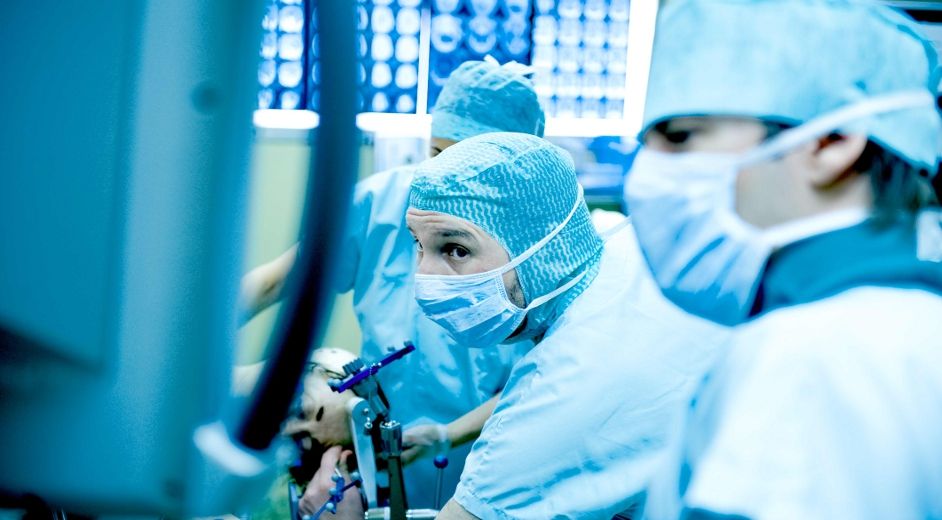Conserving healthy tissue
Dr Evaldas Cesnulis is a world-renowned expert in neurosurgery based in Zürich, Switzerland.His clinic forms part of the state-of-the-art facilities in Zurich for micro-neurosurgery.
Dr. Cesnulis is a practitioner of a cutting-edge technique called neuromonitoring that allows brain surgery to be carried out in a new way.
This advanced surgical tool allows him to perform complex operations while minimising the risk of harming healthy brain tissue.
The focus on conserving healthy tissue is one of the most important recent developments in the field of microsurgery.
The great advantage of this approach is that removing a tumour is no longer such a difficult procedure, as long as it’s an area of the brain that doesn’t control motor or language functions.
Removing tumours in sensitive areas
However, Dr. Cesnulis and his colleagues have also focused on improving the success rate of operations that remove tumours in the highly sensitive areas of the brain that control these functions.These parts of the brain are known as ‘eloquent’ areas, and it’s here that the signals created by the body’s senses are sent to be analysed.
This part of the brain controls the body’s movement and speech capabilities, and damaging it would mean a huge loss to the patient after the surgery.
Dr. Cesnulis’ approach is to avoid operating anatomically, since each patient has a slightly different brain structure.
The aim of micro-neurosurgery is to precisely pinpoint these functions on the cortex of the brain, in order to know the safe entry zones.
Mapping brain functions
Instead, his team use a process called neuromonitoring allows the surgeons to make a very detailed map of which exact areas control the body’s ability for speech and movement.The brain is stimulated with special instruments to show their status throughout the operation.
Measuring the changes in the brain’s activity on its surface during surgery enables the changes in function to be presented as a graph, which can be monitored during the procedure.
This precise map of the cortex means that the surgeon knows where and when to apply pressure and manipulate movement during surgery, in order to access the brain in a way that is safe and preserves all the functions.
Avoiding the healthy structures that surround the brain tumour or aneurysm vastly improves the outcome for the patient, and means they can expect a much better recovery.






